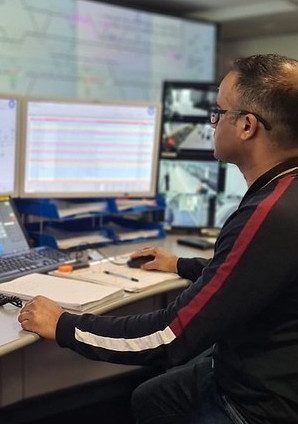On 22 July 2008, the Crossrail Act received Royal Assent, and earlier that same year Apple released its first smartphone, the iPhone 2G. Digital infrastructure was now beginning to fundamentally change how we communicated and controlled our lives, and infrastructure projects were starting to consider how much of this new technology they should embrace to deliver smarter outcomes. This fortuitous timing provided Crossrail with the opportunity to consider doing what had never been done before: to implement the UK’s first fully ‘digital railway’.
Digital technology now offers railway infrastructure owners new ways to manage and control their assets. Railways are expensive to own and operate, and most of the running costs are dictated by layers of legacy technology and inefficient operating rules. Maximising digital technology for a new railway allows outdated working practices to be overhauled and significant savings to be achieved in the full-life operating costs of the network. Crossrail worked hard from the outset to maximise these savings.
For example, Crossrail has a fully integrated Railway Control Centre (RCC), merging signalling, electrical control, tunnel systems and security systems all into a single control room. Most railways are still working on bringing their separate legacy operating systems under one roof.
Crossrail has also achieved the world’s first fusion of modern mainline and metro signalling systems onto a single train: ETCS (European Train Control System) and CBTC (Communication-Based Train Control). Complex automated functions such as ‘Auto-Reverse’ have also been incorporated, allowing the trains to reconfigure themselves automatically and without a driver present at the end of the line. Furthermore, it has the UK’s first full-height platform screen doors throughout the tunnel section, totally transforming the underground station platform environment.
Crossrail also has a modern traction power system with automatic switching and earthing capabilities, allowing fast and safe remote isolation of the overhead line. It is also one of the first railways to use a handheld possession management tablet, used by maintenance staff to block the line and safely access the track. Together, these systems have significant safety benefits to lineside workers while also maximising precious maintenance time.
As you would expect with any modern digital system, Crossrail relies on a vast dedicated communications network, allowing everything to be monitored and joined together to automate the railway; for example, when a door is opened, lights can be illuminated and
CCTV can be activated. Every system, even down to the lighting in each station, is part of the network and is computer-controlled. However, with increased connectivity, the effort needed to integrate and validate a system also increases. One of the causes of the delay to the opening date announced in 2018 was the challenge of integrating such a complex and interconnected system. Crossrail aimed high when building the UK’s most digitally enabled railway but inadvertently ended up with the challenge of integrating the UK’s most complex railway to date.
This paper outlines some of the prominent challenges of complex systems integration encountered by Crossrail, and what steps were taken to successfully integrate and open the Elizabeth line to passengers in May 2022.



